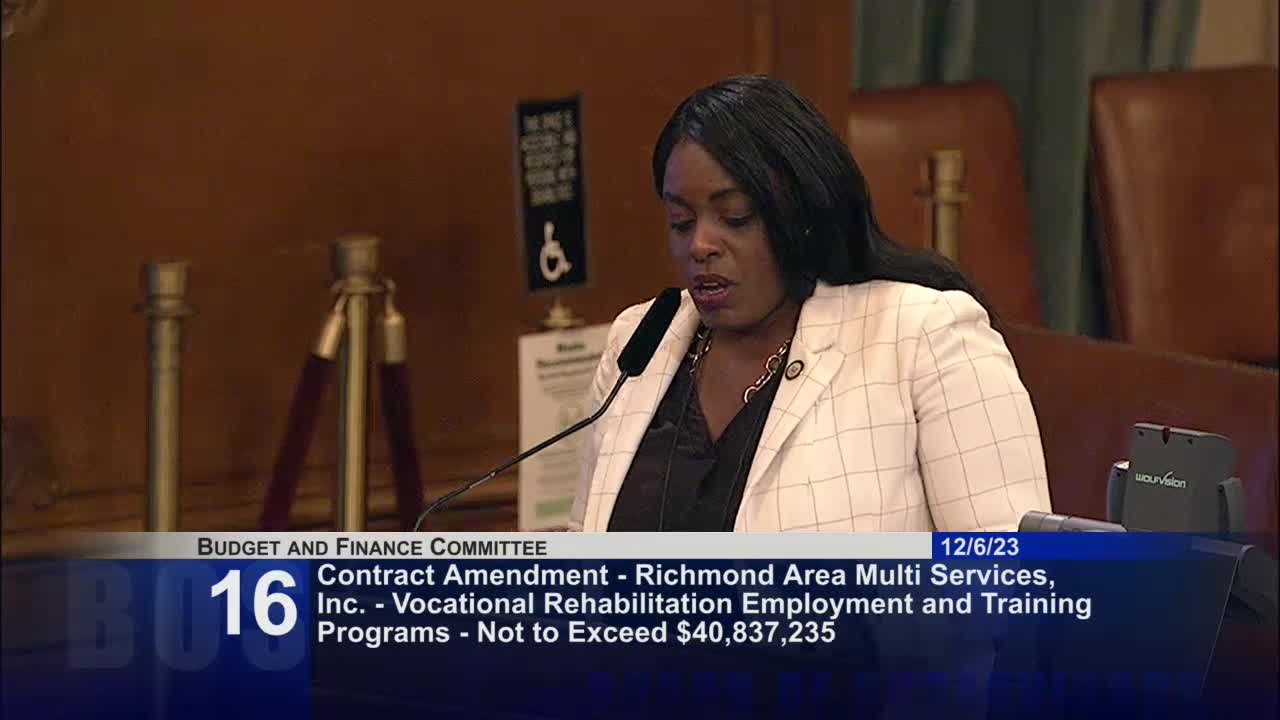San Francisco extends streamlined contracting for homelessness services until 2029
December 06, 2023 | San Francisco County, California

This article was created by AI summarizing key points discussed. AI makes mistakes, so for full details and context, please refer to the video of the full meeting. Please report any errors so we can fix them. Report an error »

The San Francisco County government meeting on July 4, 2025, focused on critical issues surrounding funding for community services, particularly for marginalized populations, and the extension of streamlined contracting for homelessness services.
A significant discussion arose regarding the funding disparities affecting the Black community in San Francisco. Community representatives expressed frustration over a drastic reduction in funding from $40 million to $16 million, highlighting the lack of resources for essential services such as youth programs, job readiness, and reentry support. They urged supervisors to connect with local agencies to ensure that available funding is utilized effectively, emphasizing the need for transparency in the allocation process.
The meeting also addressed the performance of various service programs, with concerns raised about some being classified as underutilized despite evident community needs. Officials acknowledged the need for clearer communication regarding performance evaluations and the criteria for determining program utilization. They committed to revising the metrics used to assess service delivery, aiming to better reflect the actual impact of these programs.
In a related matter, the Department of Homelessness and Supportive Housing proposed an ordinance to extend streamlined contracting procedures for homeless services for an additional five years. This extension aims to maintain momentum in reducing homelessness, which has seen a decline in San Francisco compared to other Bay Area communities. The ordinance would allow for quicker project implementation and continued support for various initiatives, including the opening of new shelter beds and supportive housing units.
The meeting concluded with a motion to amend the resolution regarding funding and contracting, which passed with a positive recommendation to the full board. The discussions underscored the ongoing challenges in addressing community needs and the importance of effective funding strategies to support vulnerable populations in San Francisco.
A significant discussion arose regarding the funding disparities affecting the Black community in San Francisco. Community representatives expressed frustration over a drastic reduction in funding from $40 million to $16 million, highlighting the lack of resources for essential services such as youth programs, job readiness, and reentry support. They urged supervisors to connect with local agencies to ensure that available funding is utilized effectively, emphasizing the need for transparency in the allocation process.
The meeting also addressed the performance of various service programs, with concerns raised about some being classified as underutilized despite evident community needs. Officials acknowledged the need for clearer communication regarding performance evaluations and the criteria for determining program utilization. They committed to revising the metrics used to assess service delivery, aiming to better reflect the actual impact of these programs.
In a related matter, the Department of Homelessness and Supportive Housing proposed an ordinance to extend streamlined contracting procedures for homeless services for an additional five years. This extension aims to maintain momentum in reducing homelessness, which has seen a decline in San Francisco compared to other Bay Area communities. The ordinance would allow for quicker project implementation and continued support for various initiatives, including the opening of new shelter beds and supportive housing units.
The meeting concluded with a motion to amend the resolution regarding funding and contracting, which passed with a positive recommendation to the full board. The discussions underscored the ongoing challenges in addressing community needs and the importance of effective funding strategies to support vulnerable populations in San Francisco.
View full meeting
This article is based on a recent meeting—watch the full video and explore the complete transcript for deeper insights into the discussion.
View full meeting
